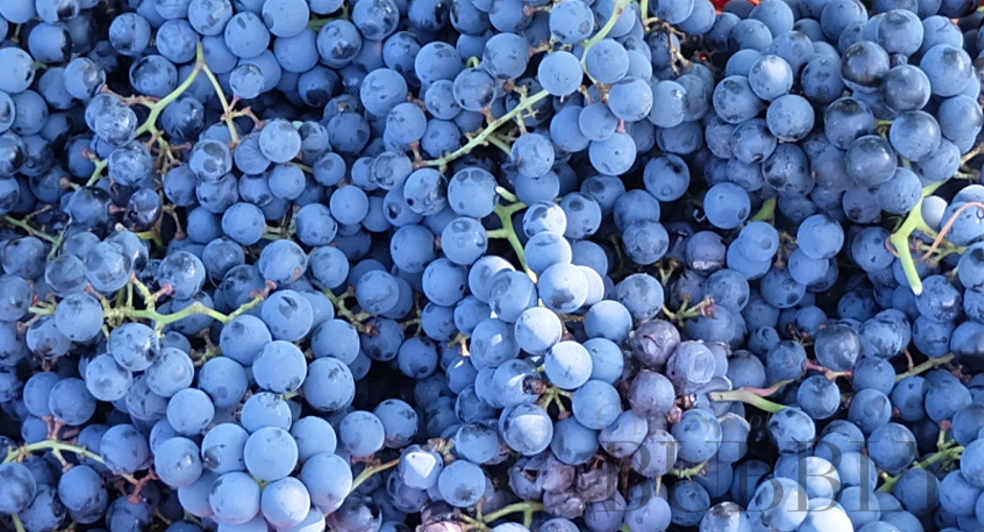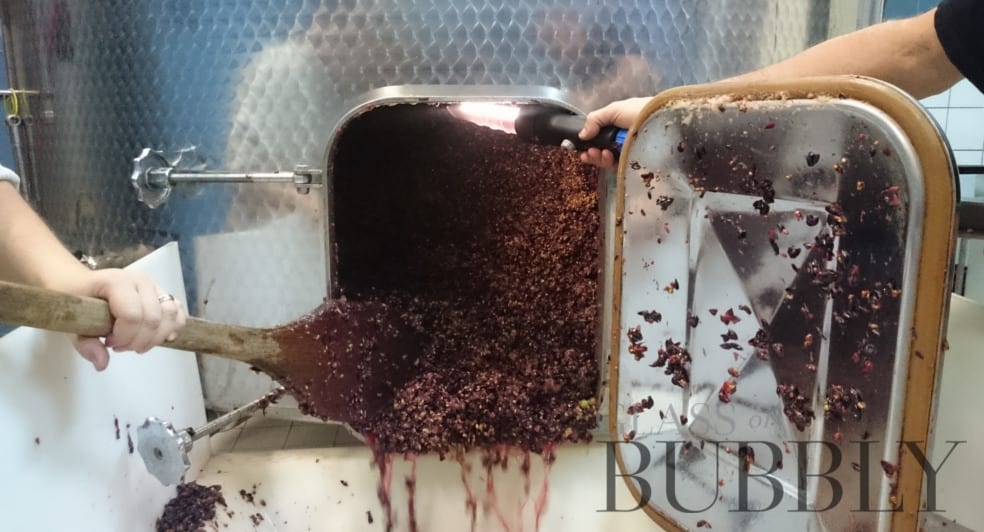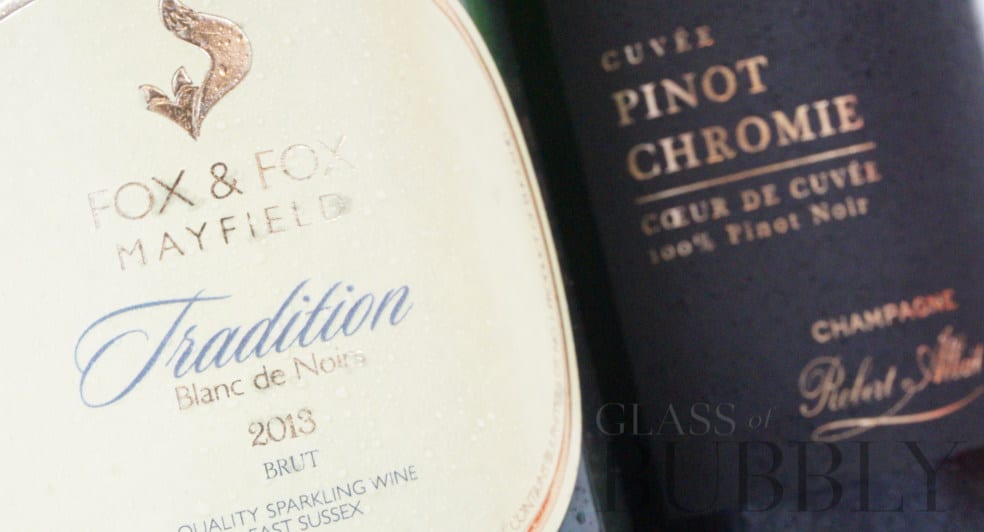Pinot Noir – Black Grape and yet White Sparkling Wine?
28th January 2021

Grapes come in all sorts of sizes and colours and very much differ in qualities / flavours. I’m sure many will remember like I do, as a child, that when grapes were in the fruit bowl it was always far more exciting than those boring old apples or oranges. The only downfall to grapes were the pips, I am not sure when they were popular, but I remember only grapes with those big larger pips in over what we see more frequently today, seedless varieties.
“Grapes which are seedless are likely to be produced via cuttings where a branch of the vine is cut off and planted over a vine originating from the seed. These cuttings produce then their clones and though grapes may contain pips, they do not mature as we all know them to be. They instead do not form their harder casing pips in each grape and we avoid the bitterness we would have encountered when we bit in to them!“
If we go shopping at the grocery store or the greengrocers, then we will likely see mainly light green grapes or darker red options and sometimes we may also see a lighter shade of red also. Many grapes we see here in the UK will have been grown abroad, though we do grow them in the UK, a warmer climate is better in order to have the preferred sweeter styles.
Grapes can be broken into three categories:
Table Grapes – Juice Grapes – Wine Grapes
Table grapes will likely have thinner skin, be sweeter in style and usually these days seedless. Juice grapes are ideally used in either juice though also for the likes of flavourings for jelly / jam, they will have a thicker skin. Lastly, the grapes which are for wines will be a heavily regulated area with classifications and these the juices with skin colourings are used to make wine.
“There is said to be over 10,000 different grape varieties. There are though only a handful of grape varieties that have established widespread popularity. In the production of commercial wine worldwide there are around 1,300 varieties of grape used.“
Can I grow grapes in England?
Yes, you can grow grapes in England. Today there are already hundreds of wineries across the country growing grapes and producing world class wines from reds to white and many fizzy examples in between. You can also plant and grow grapes at home to include those in garden pots. Many people are making their own wine at home from grapes harvested from their gardens, pots on balconies and on allotments.
Grape colours and names.
There are many different shades of grape from light green to very dark red. In the wine sector, many people refer to the grapes used in wine production as either white (shades of green) or black (shades of red). All grapes will have their name (variety) with examples such as Chardonnay, Pinot Gris, Riesling, Meunier, Merlot, Cabernet Sauvignon, Malbec and many more being those commonly known and grown especially for wine production.
“Remember, all grapes start off green! Some will, during the final ripening process (veraison), turn red and others will simply bypass this process and become translucent instead.“
Some wine regions have built their history on and thanks to single grape varieties such as the Nebbiolo grape for Barolo, Riesling grape for Alsace and Gamay grape for Beaujolais.
Pinot Noir Grape – Black grape yet white juice?
The most basic piece of information I digested when I started to study wine was that every grape produces white juice and it is only the length of skin contact, especially with darker grapes, what would change a wine from white to rosé and to red. It is the single piece of information that surprises many that I speak to who are not involved in the wine industry – White wine can be made from red grapes! Try it yourself today, take a green grape and a red grape and squeeze each to see the colour of the juice they produce.
The flesh of the grape will contain the juice, always this is white/light green and the skin will carry the pigment thus the colouring. The longer the contact of the skin (red) with the grape juice, the darker it will become.
In the world of wine, seeds/pips are found in the grapes and also form part of the wine production, thus the end product in the bottles / in your glass of wine. Most times the seed along with the stems and the skins are removed soon after they are crushed, depending though on requirements of the winemaker (they produce tannins / colour / acidity).
The Pinot Noir grape (species Vitis vinifera), famously found in France for the Burgundy and Champagne regions, is one of the most well known and respected wine varieties used in the production of sparkling wine. This thin-skinned grape that grows in character small, tight bunches is said to be the 10th most planted grape variety globally. It offers a strong character of fresh red berry fruit flavours and is said to be a good one for ageing (low pH). Pinot Noir is also a popular grape grown in the United States, Germany, New Zealand and Italy.
“Pinot Noir is ever so prominent and shows wonderful red berry fruit, red floral and tobacco / forest flavour characters. Even with a touch of this grape as part of a blend, it will boldly show its characters. A good example of this is the recent release of Prosecco Rosé Millesimato in that no more than 15% can be a blend of Pinot Noir (85% minimum of Glera) yet it shines through for me in the many examples I have tasted.“
In most cases, you will find Pinot Noir as still red wines, a simple google search for the grape and its wines will show you this. The wine when poured will offer more of a lighter shade of red and give a cranberry and cherry style of flavour. The Pinot Noir from Bricoleur Vineyards, for example, offers a beautiful balance of raspberry, cherry, and subtle hints of thyme and white pepper, with a smooth, layered finish.

Removing from the pulp of the Pinot Noir grape all the skin, seeds and stems – Here producing the Rosé de Saignée Champagne of Roger Constant Lemaire
Rosé will be the other popular shade, especially for sparkling wine, when you see a 100% Pinot Noir. Wines will be light and fruity with soft expressions of the red berry fruits.
Even though the grape is black, it does also produce many still white wines to include sparkling. Though less common in production (more frequent to find Pinot Noir as a % of the overall blend), wineries do like to experiment with a 100% Pinot Noir that is a white wine. The flavours will once again show the Pinot Noir character, softly presenting the red berry fruits.

English Sparkling Wine & Champagne Pinot Noir
Two examples of Pinot Noir white sparkling wines:
If you spend a bit of time searching you will undoubtedly find a fine selection of Pinot Noir 100% or dominant sparkling wines from many countries. For this article, I wanted to take a look at an example from England and one from the Champagne region of France.
Fox & Fox Winery – Mayfield, Sussex. Website: https://www.foxandfox.wine/shop/tradition-brut-blanc-de-noirs-2014/
Brut Traditional 2014 (standard size and magnum available – 2013 sold out) 95% Pinot Noir 5% Chardonnay
Tasting notes: “Magnum size. Nose is calling out to you straight away. I’m a big fan of the Fox & Fox range even though I’ve yet to visit this winery. It’s an English garden fruit crumble, baking away in a country chocolate box cottage, in aromas. Flavours are a refreshing hit of English garden zestiness with floral notes, white strawberries (pineberries), foliage, lemon zest in the length. Dare I say, this can improve more, on cork, for a few years to come, if safely stored.”
Champagne Robert Allait – Villers-sous-Chatillon. Website: https://www.champagne-robert-allait.com/#les-cuvees
Cuvée Pinot Chromie 100% Pinot Noir
Tasting notes: “Red berries, yellow floral and soft citrus aromas. It’s crisp and refreshing. Punchy style, this will be great for varied gastronomy delights. A red berry fruits, citrus, chalky style palate delight.“
![]()
Glass of Bubbly Content
Content shared by this account is either news shared free by third parties or advertising content from third parties and affiliations. Please be advised that links to third party websites are not endorsed by Glass of Bubbly Ltd - Please do your own research before committing to any third party business promoted on our website.
